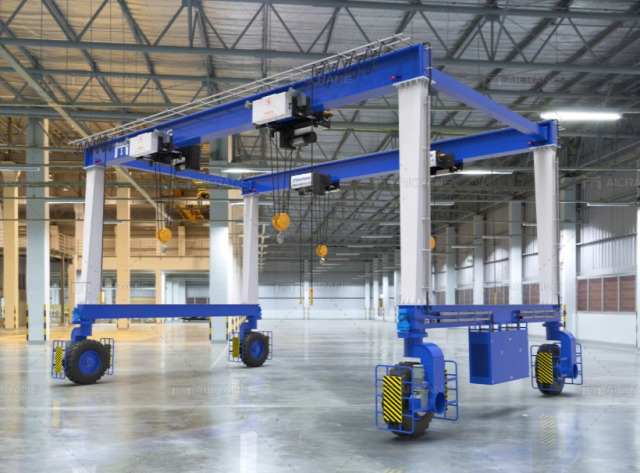Rubber tyred gantry cranes (RTGs) have become indispensable assets in modern container terminals and ports, facilitating the efficient movement of containers and cargo. Their mobility, versatility, and ability to handle heavy loads make them vital in maritime logistics. Whether it's loading and unloading containers from trucks or positioning them within storage yards, understanding the intricacies of RTG operation and installation is crucial. In this comprehensive guide, we'll delve into the essential aspects of rubber tyred gantry crane operation and installation.

Understanding Rubber Tyred Gantry Cranes
Rubber tyred gantry cranes are characterized by their rubber tires, which allow them to move smoothly on designated tracks within container terminals. Here's a breakdown of the key components and features:
1. Structure: RTGs consist of a steel structure with a trolley mechanism for lateral movement and a hoisting mechanism for vertical lifting. The operator's cabin is typically located on one side of the trolley.
2. Rubber Tires: The crane's rubber tires enable it to move horizontally along rails without causing damage to the terminal surface. This mobility facilitates efficient container stacking and retrieval.
3. Power Source: RTGs are powered by electricity, usually drawn from the terminal's power grid. Some models incorporate regenerative braking technology to capture and reuse energy during deceleration.
4. Spreader: The spreader is the component that attaches to the container and facilitates lifting and lowering operations. Different types of spreaders are used to handle various container sizes and types.
Installation of Rubber Tyred Gantry Cranes
Proper installation is the foundation for safe and efficient rubber tyred gantry crane operation. Here's an overview of the installation process:
1. Site Preparation: The terminal or port area where the RTGs will be installed must be properly prepared. This involves laying down the tracks and ensuring a stable foundation to support the crane's weight.
2. Crane Assembly: The RTG arrives in components and must be assembled on-site. This process includes erecting the steel structure, attaching the trolley and hoisting mechanisms, and mounting the rubber tires.
3. Electrical and Control System Installation: The crane's electrical system, including power cables, control panels, and communication systems, must be installed and connected. This ensures proper functionality and remote operation from the operator's cabin.
4. Testing and Commissioning: Once assembled, the RTG undergoes rigorous testing to ensure all components are functioning correctly. This includes load testing, safety system checks, and calibration of control mechanisms.
Rubber Tyred Gantry Crane Operation Techniques
Efficient operation of RTGs requires skill, precision, and a keen understanding of safety protocols. Here are some essential operation techniques:
1. Load Management: Proper load management is crucial to prevent overloading and maintain stability during lifting and movement. Operators should be aware of the crane's load capacity and adhere to guidelines.
2. Spreaders and Containers: Different spreaders are used for various container types. Selecting the appropriate spreader ensures secure attachment and safe movement of containers.
3. Smooth Movement: Operators should maneuver the RTG smoothly and avoid sudden movements. Jerky motions can cause damage to containers, equipment, and the crane itself.
4. Safety Protocols: Strict adherence to safety protocols is paramount in RTG operation. This includes maintaining safe distances from other equipment, using proper signals for communication, and adhering to terminal traffic rules.
5. Remote Operation: Most RTGs allow remote operation from the operator's cabin. Operators should receive proper training to navigate the terminal and handle the crane efficiently from a remote location.
Conclusion
Rubber tyred gantry cranes have transformed container handling in ports and terminals, enhancing efficiency and optimizing cargo movements. Successful RTG operation and installation require a blend of technical expertise, safety consciousness, and adherence to industry best practices. By understanding the crane's components, installation process, and operation techniques, stakeholders in maritime logistics can ensure that their rubber tyred gantry cranes contribute to seamless operations, increased throughput, and the continued growth of global trade.

